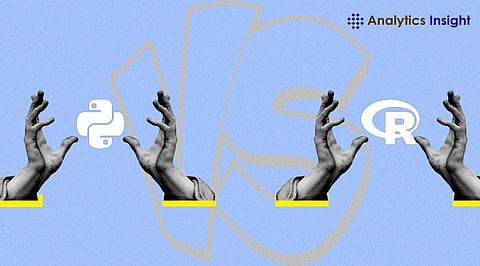

In the ever-changing landscape of data science, where the right tools can make all the difference, a fundamental decision often stands at the crossroads of every aspiring data professional: R Vs Python. Both languages wield significant influence, each boasting unique strengths and applications. In this exploration, we delve into the intricacies of this perennial debate, shedding light on crucial considerations that can guide aspiring data scientists toward an informed decision.
Python has emerged as a frontrunner in recent years, captivating the hearts of developers and data enthusiasts alike. Its simplicity, versatility, and rich library ecosystem that includes Pandas, NumPy, and Scikit-learn have propelled it to the forefront of various domains. Python's expansive and active community further solidifies its position, providing a wealth of resources, tutorials, and online support.
On the flip side, R has long been the go-to for statisticians and researchers due to its robust statistical capabilities and a plethora of packages tailored explicitly for data analysis and visualization. While its user base might not match Python's sheer numbers, R maintains a dedicated community, offering comprehensive documentation and support tailored for data-centric projects.
Python enjoys an edge when it comes to ease of learning, particularly for beginners. It's clear and concise syntax resembles pseudocode, making it intuitive for those new to programming. Python's versatility enables seamless transitions from data science to other domains, such as web development or machine learning.
R, however, comes with a steeper learning curve, especially for individuals without prior programming experience. Its syntax, influenced by mathematical notation, may feel unfamiliar to beginners. Yet, for those with a statistical or academic background, R's syntax and functionality may feel more natural and conducive to data analysis tasks.
Choosing between Python and R for Data Science often hinges on project requirements and career aspirations. Python's versatility makes it suitable for an array of applications, from data wrangling and visualization to machine learning and deep learning. Its extensive libraries and frameworks cover nearly every facet of the data science pipeline, making it a preferred choice for many professionals.
R, on the other hand, excels in statistical analysis, boasting a wide array of packages dedicated to regression analysis, time series forecasting, and hypothesis testing. If your work primarily involves traditional statistical methods or if you're engaged in academia or research, R might align better with your needs.
In the competitive job market, industry trends play a pivotal role. Python's widespread adoption and versatility give it an edge in terms of demand. Many companies prefer Python due to its seamless integration with various technologies like web development frameworks and cloud computing platforms, making it the language of choice for data science roles in diverse industries.
However, industry-specific nuances should not be ignored. Some sectors, like finance and healthcare, may still heavily rely on R for data analysis and modeling tasks, creating niche job opportunities for R specialists.
As technology evolves, future-proofing skills become imperative. Python currently dominates the data science landscape, but the field is ever-changing, with new tools and languages constantly emerging. Regardless of whether you choose R, Python, or both, maintaining a broad skill set and staying updated on industry trends is crucial for long-term success.
The choice between R and Python for data science is a highly individualized decision. Each language offers distinct strengths and applications, and mastering either can unlock exciting opportunities in the data science realm. Whether you lean towards Python's versatility or appreciate R's statistical prowess, investing in your data science skills remains a valuable step towards a rewarding career.
Join our WhatsApp Channel to get the latest news, exclusives and videos on WhatsApp
_____________
Disclaimer: Analytics Insight does not provide financial advice or guidance. Also note that the cryptocurrencies mentioned/listed on the website could potentially be scams, i.e. designed to induce you to invest financial resources that may be lost forever and not be recoverable once investments are made. You are responsible for conducting your own research (DYOR) before making any investments. Read more here.
